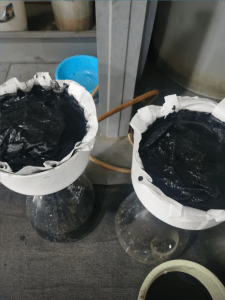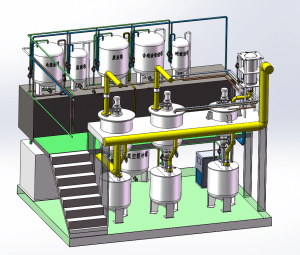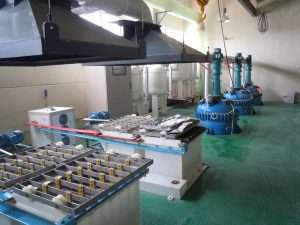Call us now:
Gold refining equipment is used to purify gold by removing impurities and other metals that may be present. Here are some commonly used equipment for gold refining:
Miller Process: This process uses chlorine gas and is one of the most popular methods for refining gold. It involves melting gold with chlorine gas to remove impurities and then casting the pure gold into ingots.
Aqua Regia: This is a mixture of nitric acid and hydrochloric acid. Aqua regia dissolves gold and other metals that may be present, leaving behind only pure gold. The process requires special equipment, such as glassware and fume hoods, as the fumes can be hazardous.
Electrolytic Refining: This process uses an electrolytic cell and an external power source to refine gold. The impure gold is placed in a solution of gold chloride and then an electric current is passed through the solution, causing the gold to be deposited on the cathode.
Cupellation: This method is commonly used to refine small amounts of gold. The gold is melted in a furnace along with a flux such as borax or silica. The impurities are oxidized and absorbed by the flux, leaving behind pure gold.
Retorting: This method is used to refine gold from mercury amalgam. The amalgam is heated in a retort, causing the mercury to vaporize and leaving behind pure gold.
These are just a few examples of the equipment used for gold refining. The specific equipment used will depend on the quantity and quality of the gold being refined, as well as the specific refining process being used.
Acid Treatment: This method involves the use of nitric acid to dissolve impurities in gold. The gold is first melted and then treated with nitric acid to dissolve impurities such as copper, silver, and other base metals. The remaining gold is then washed and dried.
Inquartation: This process involves the addition of silver to gold in order to reduce the gold's purity and make it easier to refine. The gold and silver are then dissolved in nitric acid and the resulting solution is treated with hydrochloric acid to precipitate the silver out of the solution. The remaining gold is then washed and dried.
Fumeless Refining: This method uses a closed system to refine gold, eliminating the need for fume hoods or other ventilation equipment. The gold is melted in a special furnace and then treated with a chemical solution to remove impurities. The process is environmentally friendly and produces high-quality gold.
Carbon Adsorption: This method involves the use of activated carbon to adsorb impurities from gold. The gold is dissolved in a solution of cyanide and then passed over activated carbon, which adsorbs the impurities. The remaining gold is then washed and dried.
These are some of the commonly used equipment and methods for gold refining. Each method has its own advantages and disadvantages, and the choice of method will depend on factors such as the quantity and quality of the gold being refined, the desired purity of the final product, and the equipment available.


